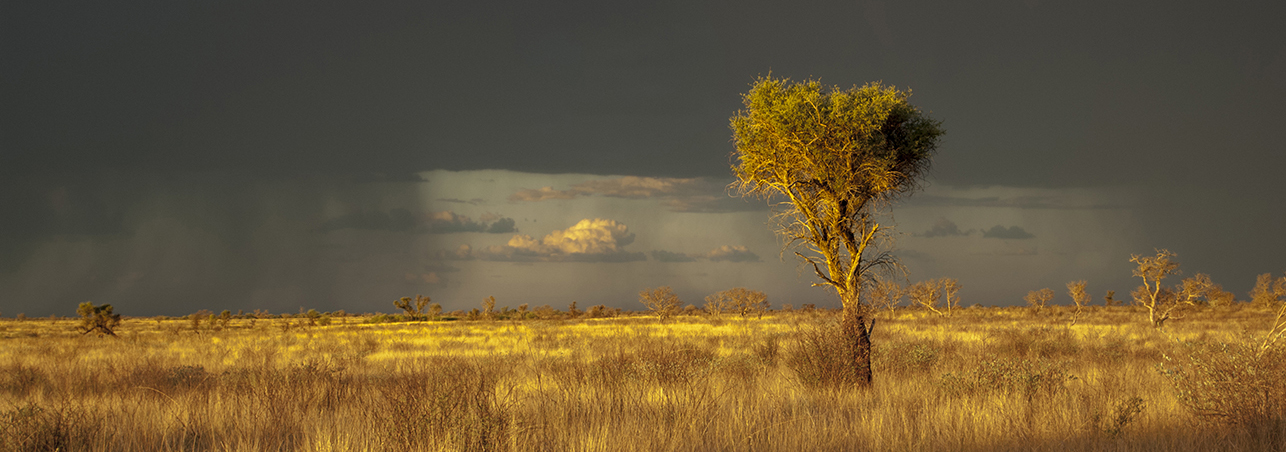Leopard Ecology & Conservation works in the Khutse and Central Kalahari Game Reserve region and around the village of Kaudwane.
Kalahari Ecosystem
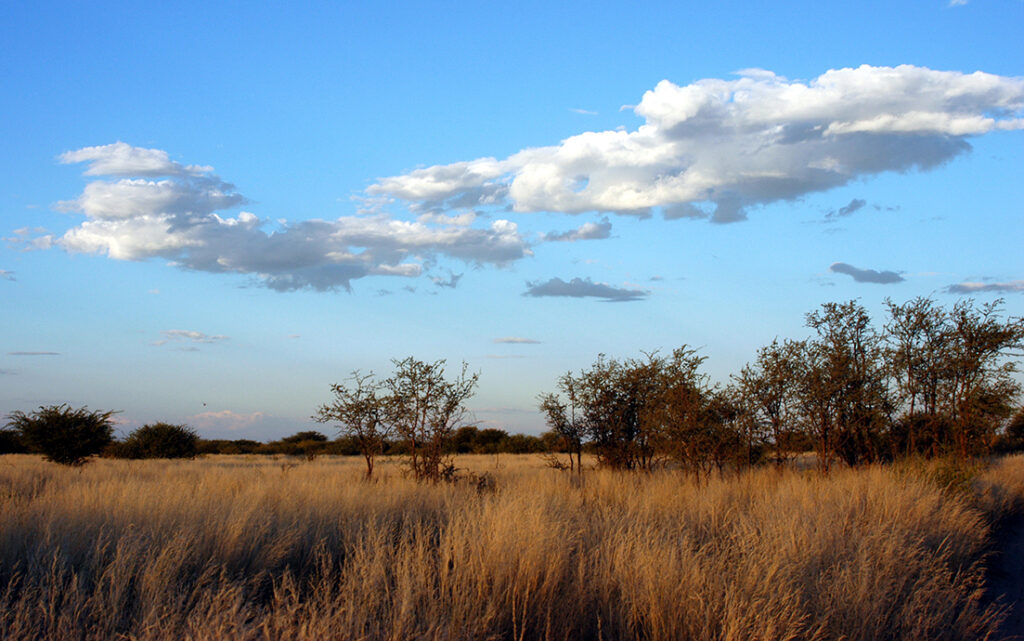
- Study area: approximately
15’000 km². - Kalahari Ecosystem: Khutse and the Central Kalahari Game Reserve encompass an area of 55’000 km² and form the central section of the greater Kalahari ecosystem covering much of Botswana and parts of Namibia and South Africa.
- Arid savannah covered with trees and grasses.
- Average annual rainfall varies between 150 and 400 mm. This rain usually falls in short heavy showers (up to 100 mm in 30 minutes!) between the months of November and March.
- Temperatures in the summer are highest just before the rains in October-November and can reach up to 55 degrees Celsius. In the depth of winter, in June and July, night time temperatures regularly drop below 0 degrees Celsius.
- The sandy, well drained, nutrient poor soil, combined with low, erratic rainfall and extremes of temperature can make the Kalahari a difficult place to live in.
People of the San
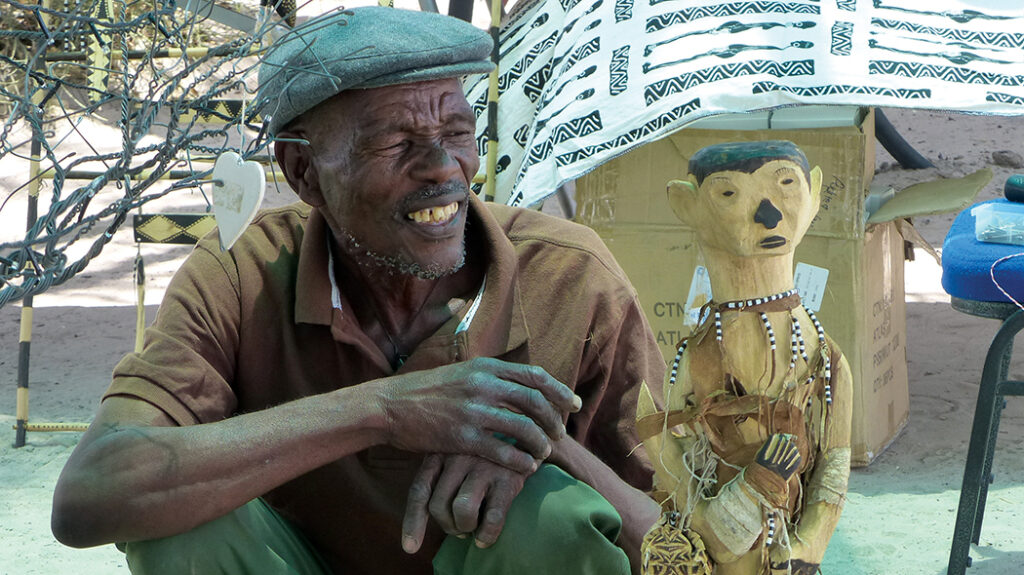
- The People of the San have been living in the Kalahari for at about 20 000 years.
- Tribes such as the Batshila, G//ana and Naro (known collectively as San people)
- Nomadic family groups: Until very recently (late 1980’s early 1990’s) they lived in small, nomadic family groups, surviving as hunter-gatherers. They are one of the only groups of people who have learnt to live with no surface water for much of the year.
- Settlements: Although most San people now live in towns and villages (such as Kaudwane) there are currently eight settlements of people still living inside the Central Kalahari Game Reserve. These people are attempting to live in the traditional way although with a few modern extras such as vehicles, some livestock (horses, donkeys and goats) and, in some cases, boreholes.
Pans
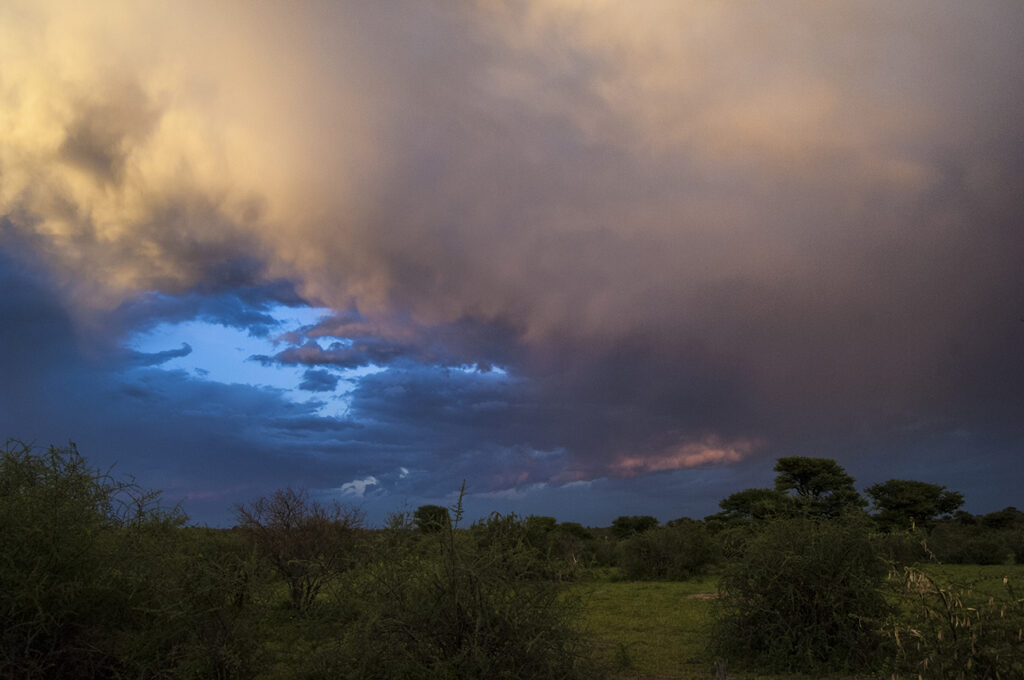
Although most of the Kalahari is on fine sand there are occasional pans. These pans tend to be found along fossil river beds and have relatively mineral rich clay soils that support distinct vegetation communities. The pan soils also hold water in depressions, creating natural waterholes where water is available for much longer than the surrounding areas. The water and minerals, such as salt, and the nutritious grasses, attract many different animals to the pans, making them focal points for wildlife and people alike.
Fauna and Flora
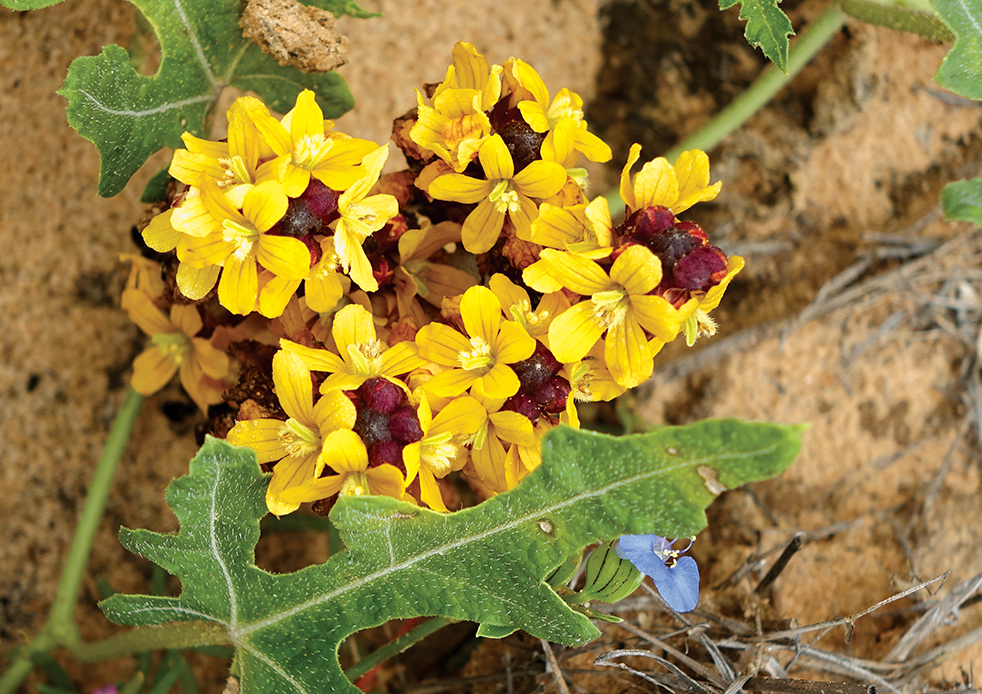
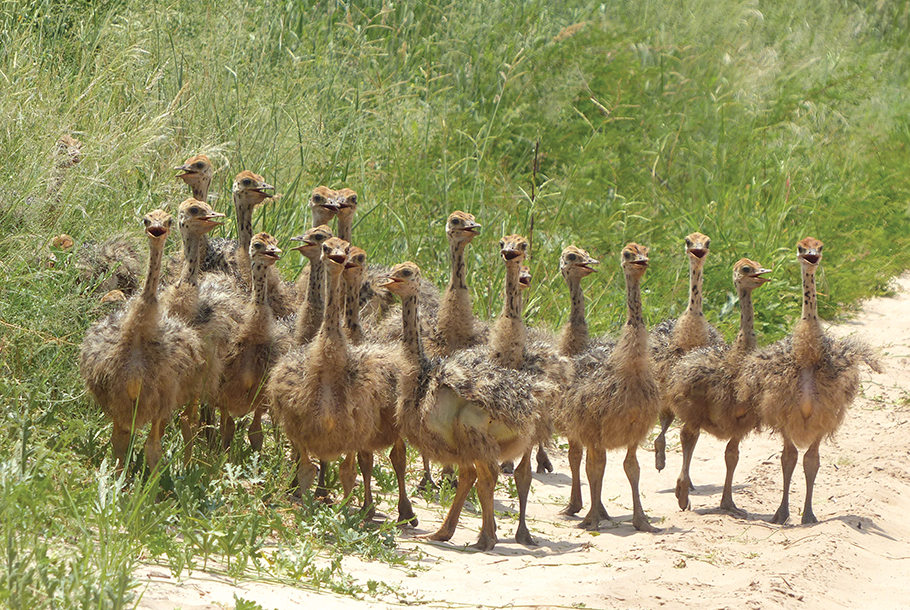
Although the fauna and flora of the Kalahari is not as diverse as in many other savannah regions, it hosts a large number of specially adapted species that are rare in other parts of Africa.
- animals such as gemsbok (Oryx gazella), springbok (Antidorcas marsupialis), and bat eared foxes (Otocyon megalotis),
- trees such as the Camel thorn (Vachellia erioloba) and the Kalahari apple-leaf (Philenoptera nelsii). There are many special birds in the area too,
- birds: the ostrich (Struthio camelus, worlds larges bird) and the world’s heaviest flying bird, the Kori bustard (Ardeotis kori), along with numerous birds of prey.
- Africa’s large predator species: including lion (Panthera leo), leopard (Panthera pardus), cheetah (Acinonyx jubatus), African wild dogs (Lycaon pictus), brown hyena (Hyaena brunnea), caracal (Caracal caracal), and black backed jackal (Canis mesomelas).

